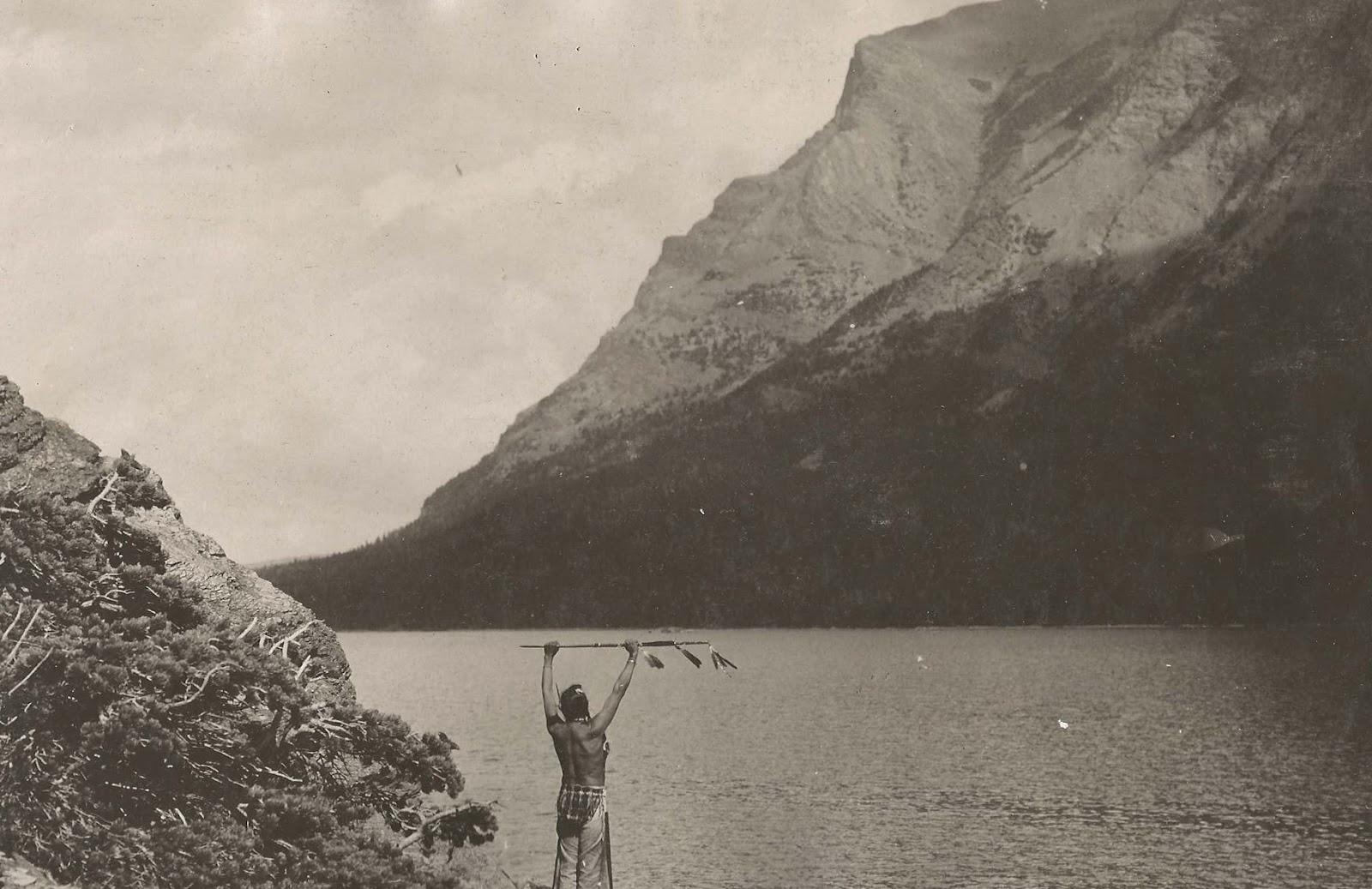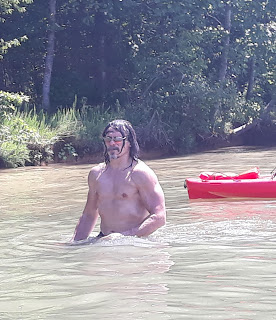Indigenous tribes of the early Americas were noted for
covering tremendous distances in dense Eastern woodland, stark Plains, and the treacherous
desert and mountain territories of the Southwest.
Yes, many horse-culture tribes covered these vast territorial
empires on horseback, but pre and post-horse many were doing the same vast
ranging by dint of foot travel alone.
These “terrain-eaters” or “earth-walkers” were not confined
to some cardio-blessed cadre within each tribe; we see these feats of distance
and fleet-of-foot speed demonstrated across the board in man, woman, and child.
General Crook during his pursuit of the Apache in
America’s Southwest would remark that entire villages would be up and long gone
from last-known scout-reported locations in a mere 24-hours.
That is, man, woman, and child—young and old—packed camp
and were gone by the time the soldiers arrived.
An entire village could be 70 miles away by the next
day and this is all under load.
Remarkable.
These distance and speed stories are copious in the historical
and anecdotal record.
What makes them additionally remarkable, at least to
my eye, is the concentration of how to walk, lope, run,
crawl, in short, how to move on the planet was given such fine detailed
attention.
In essence, all were “trained” to move efficiently
from a young age.
It stands to reason that a nomadic people would refine
the main mode of travel, just as we pursue the newest model of car.
Walking, Running, & Loping
There is confusion among some who merely read accounts
that the speed of movement and the distances covered must have been made by
running, or at the very least a sort of jogging tack.
This confusion is added to by many calling how the
tribes moved as “Indian Running.”
But this is a bit of a misnomer.
Yes, running was used by tribes—often by the Warrior
class or messengers. Many games and competitions featured the sort of running we
envision when we use the word “run.”
Many of these games are captured in Peter Nabokov’s Indian
Running: Native American History & Tradition. Nabokov’s volume focuses
on the actual running traditions of the Southwest, the Navajo and Tarahumara,
for instance. The Tarahumara also feature in Christopher MacDougall’s Born
to Run: A Hidden Tribe, Superathletes, and the Greatest Race the World Has
Never Seen.
What these volumes do not capture is the other form of
“running,” what many an early Cavalry journal reported as “That curious
miles eating lope.”
Often, what was referred to as “running” was actually
what we term Warrior Walking, which is an incessant miles-eating walking
pace with its own curious mechanics.
[Western author Larry McMurtry combined aspects of
these Warrior Walkers into a single character, the Indian scout, Famous Shoes,
in the novels Streets of Laredo and Comanche Moon, both part of The
Lonesome Dove series.]
Warrior Walking & Indian Running
There is a vast difference between these forms of indigenous
locomotion. We have detailed these differences in our program Unleaded: Warrior Walking, the Only Cardio You Need for Combination Fighting, Physical Culture and Attacking the Outdoors.
Let us look to one account of the Northern Blackfeet
to observe an instance of Warrior Walking that has mistakenly been termed “running.”
The following is from the reminiscences of Buffalo
Child Long Lance, a North Carolinian of mixed race who adopted into a tribe and
observed the following. [His “outsider” status likely explains the use of the word
“running” to describe what he saw.]
“A favorite race of the Northern Blackfeet, on
sports days, was running from Blackfoot Crossing, now Gleichen, Alberta, to
Medicine Hat and back. That was a distance of about 240 miles. They would start
one morning and return the next day—non-stop and on foot. We always ran our
foot-races barefoot, not caring to wear out our moccasins, and at the same time
wishing to strengthen and toughen our feet. We would tie a buckskin band around
our heads to keep our long hair out of our faces, and pull off everything but
our breech-cloth, and we ran with our hands down at our hips. It was undignified and a sign of weakness to bend our elbows
and run with the hands seesawing back and forth across our chests. After
our races we always plunged into the cold river for a swim.”
Points of Note
·
The mileage, if accurate, is stunning.
Hell, even if we cut that distance in half, stunning for a 48-hour trip.
·
Running barefoot is common in these accounts,
either that or having a surplus of moccasins in one’s pack. [Many mountain men
and scouts would strip moccasins off fallen combatants to store up for just
such long-walk needed occasions.] Kinda puts our obsession with engineered
footgear into perspective.
·
“Running” with Hands-Down—this
is referred to in account after account by Frontier Cavalry observers, this is
what they referred to as a “lope.”
·
This is not an awkward stiff-armed run; it
is a rapid and smoothly paced walk.
·
The Warrior Walking Program goes into
strict detail as to how this straight-arm position was utilized—shoulder
position is mighty key.
“It was undignified and a sign of weakness to bend our
elbows and run with the hands seesawing back and forth across our chests.”
·
Another key observation.
·
In Warrior Walking arm amplitude never
changes and contralateral arm motion never crosses the hips.
·
Inefficient forward momentum forces and a
bit of spinal shearing and added fatigue for the long distances aimed for.
Of course, there is more to Warrior Walking, loping, this
walking form of “Indian Running” than we can get into here. We cover it all in detail
in our Warrior Walking Program, but for our purposes, it is sufficient
and remarkable to observe that a nomadic people put quite a lot of brilliant thought
into how to move across the planet.
It turns the simple act of walking into a work of Warrior
Art.
For more information on Warrior Walking or to get
started on this Old Way.
Info on our other Old School Inspired Conditioning
Available Volumes in The Unleaded Program
·
The Pliant Physique
·
Core Stability
·
Hips Stability
·
GFF: Grip-Fingers-Forearms.
·
The Chest Battery
·
The Back Battery
·
The Shoulder Battery
Upcoming Unleaded Volumes include…
·
Hidden Gems: Stabilizing Muscle
[Pre-Hab, Re-Hab, & the True Core]
·
The Shotgun Muscle Trifecta:
Strengthening the Peripherals
·
The Shock Muscle Trifecta: Ballistic
Motion for Combat Athletes
·
The Tarzan Twelve: Feats to Show Off
What You’ve Built
·
And complete Batterys for Core:
Abdominal Strength and Rotational/Extension Game-Changers, Thigh-Hips-Knees,
Biceps, & Triceps.
·
The Unleaded Female Warrior Program
·
[Each Program is a DVD/Booklet package.]
More Resources for Livin’ the Warrior
Life!
The Rough ‘n’ Tumble Raconteur Podcast



Comments
Post a Comment